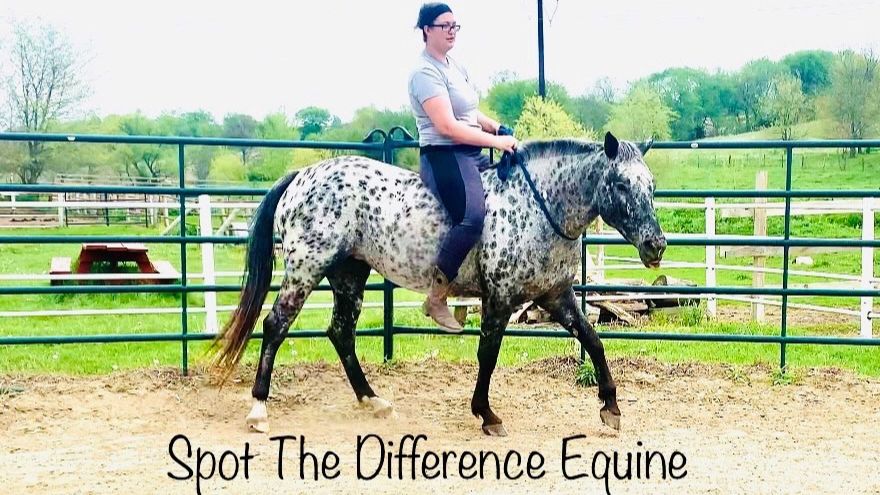by Stephanie Osbahr from Spot the Difference Equine
I have been riding, jumping, showing, and around horses for a total of almost 15 years. During that time, I fell in love with the Appaloosa breed and with my horse of a lifetime, Choc, better known as “Spot The Difference”. Choc was a technical rescue horse that made me the rider and trainer I am today, as well as sealed my love for the athletic spotted breed. He took me from open shows all the way to USEF National rated shows all by training him myself.
Appaloosas are not the traditional horse we often see in showjumping. You’re much more likely to come across a Hanoverian, Belgian Warmblood or Oldenburg in the ring. While these are the traditional choices, a good jumping horse needs one big thing- willingness. A horse that does not want to jump will not jump. More so, a good rider needs to be patient, confident and extremely determined.
Along with training Appaloosas to be jumpers, I also train them to be liberty trick horses.
What is a liberty trick horse? This horse is trained at its own liberty with positive reinforcement (+R), which gives the horse the option to not participate and none of the training is forced. The tricks the horse learns, such as bowing or smiling, are taught by rewarding small efforts which eventually evolve into the trick you are trying to teach the horse.
This process varies from horse to horse, but with the positive reinforcement (+R) training, you use a motivator, such as treats or scratches, that encourages the horse to do the behaviors you want. I personally use food and treats as that is what motivates my horses the most. I always reward even the smallest effort because I don’t want to discourage the horse either.
Each horse trains at a different pace. This can take days, weeks, months or years. I own a 5-year-old Appaloosa gelding that learned to paw and alternate legs which evolved to the Spanish walk in 30 minutes. My 7-year-old Appaloosa mare learned to bow after a week of working on it for 15 minutes a day. My horses alone just show how much it can vary from horse to horse. Smiling is an easier trick for a horse to learn than the Spanish walk, but how you cue the horse and figuring out the correct timing to reward is also a factor in how effectively and quickly you can train a horse to learn tricks.
Dottie, my 7-year-old Appaloosa mare, is trained to smile and bow, while Toby, my 5-year-old Appaloosa gelding, is trained to smile, bow, paw (will also alternate legs on cue), and the basics of the Spanish walk. I plan to train both Appaloosas to eventually learn more tricks! Dottie already understands the basics of tackless riding and can walk and stop in a neck rope. We are slowly working with to eventually ride, walk, trot, canter and jump tackless!
Ultimately, I train my Appaloosas to be jumpers. In the past, I have shown up to USEF National rated shows, but my current horses are quite green. I plan to show them at local and open shows in Southwestern Iowa and Eastern Nebraska until they are more developed under saddle. Dottie will be my primary focus this year as she’s at a more mature age than Toby. However, the physical and mental well-being of my horses are always my top priority before I even consider showing.
Toby “Mighty Cool Doc” and Dottie “Princess Amy Jo” will be following Choc's footsteps of showing people how far the Appaloosa breed can go in the sport horse world. From liberty training to showing, these horses are highly trainable.
Appaloosas are vastly underestimated as potential sport horse mounts. I hope to show everyone via my social media and outings how versatile the Appaloosa breed is. I am happy to be part of the community of equestrians and hope to be bringing Dottie, my 7-year-old black leopard Appaloosa mare, to the Gallery of Breeds presented at International Omaha so people can meet an Appaloosa in person!

